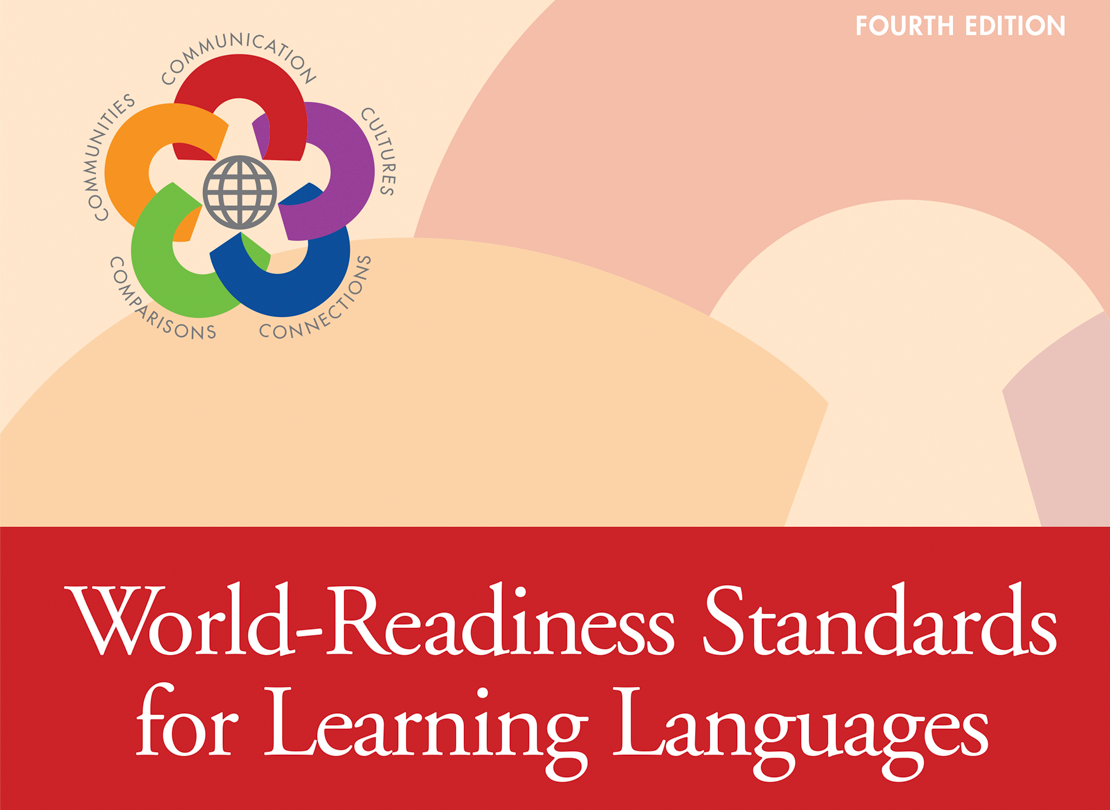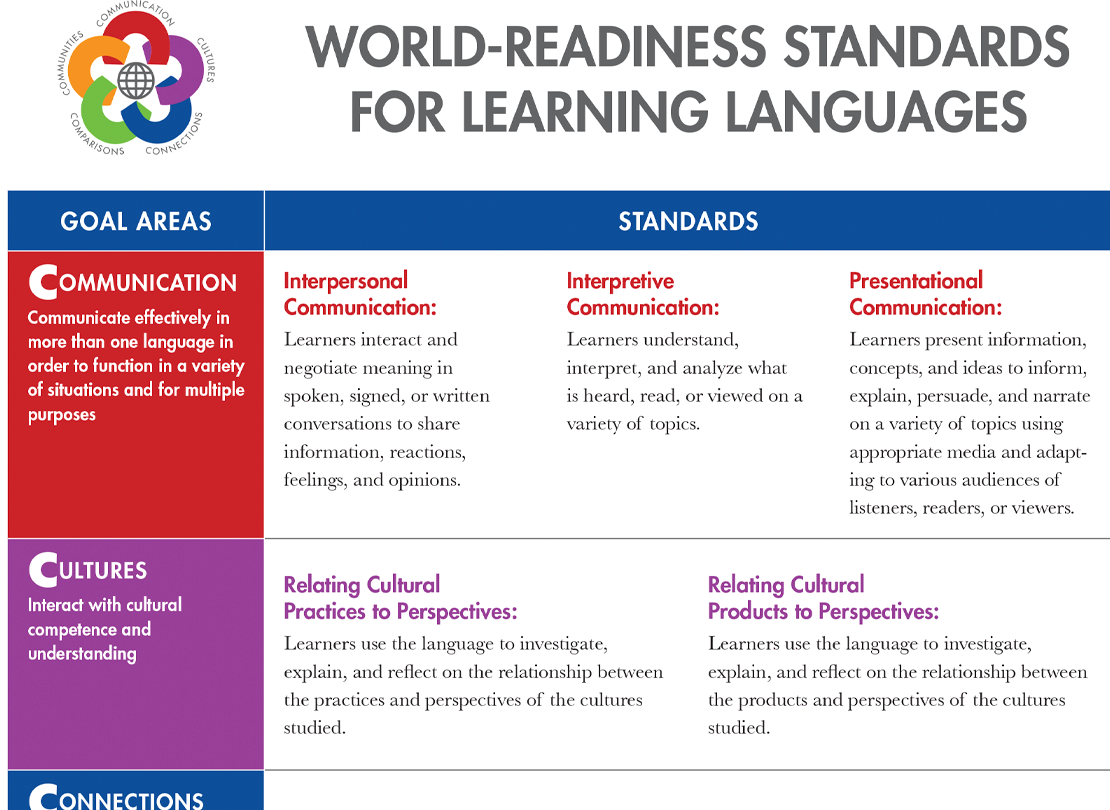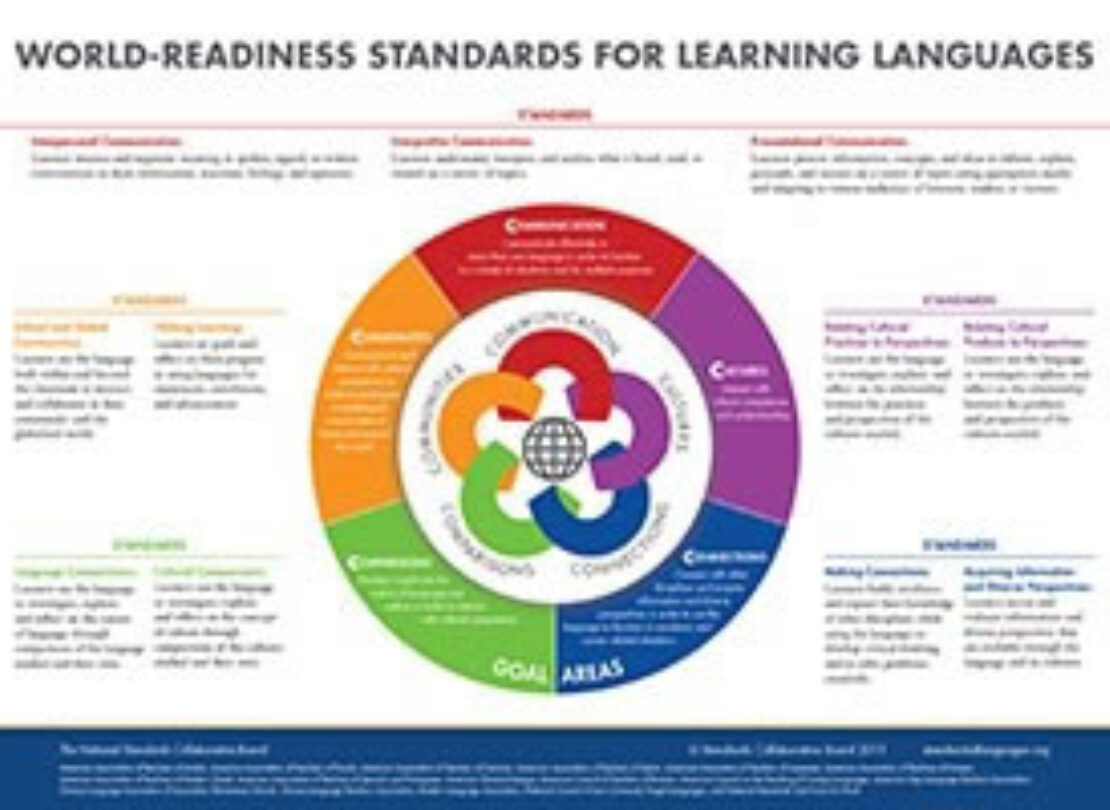The History of the Standards
With the help of a three-year grant from the US Department of Education and the National Endowment for the Humanities, an eleven-member task force, representing a variety of languages, levels of instruction, program models, and geographic regions, undertook the task of defining content standards — what students should know and be able to do — in language learning. The final document, Standards for Foreign Language Learning: Preparing for the 21st Century, first published in 1996, represents an unprecedented consensus among educators, business leaders, government, and the community on the definition and role of language instruction in American education. This visionary document has been used by teachers, administrators, and curriculum developers at both state and local levels to begin to improve language education in our nation's schools.
The National Standards for Learning Languages have been revised based on what language educators have learned from more than 15 years of implementing the Standards. The guiding principle was to clarify what language learners would do to demonstrate progress on each Standard.
The World-Readiness Standards for Learning Languages create a roadmap to guide learners to develop competence to communicate effectively and interact with cultural understanding. “World-Readiness” signals that the Standards have been revised with important changes to focus on the literacy developed and the real-world applications. Learners who add another language and culture to their preparation are not only college- and career-ready, but are also “world-ready”—that is, prepared to add the necessary knowledge, skills, and dispositions to their résumés for entering postsecondary study or a career.
These Standards are equally applicable to:
- learners at all levels, from pre-kindergarten through postsecondary levels
- native speakers and heritage speakers, including ESL students
- American Sign Language
- Classical Languages (Latin and Greek)



